If you have Sardinia on your bucket list (and you should!), you’re probably wondering when the best time to travel to Italy’s second-largest island is. Because as beautiful as Sardinia may be year-round, every season has its own special features. Here we give you an overview of when it’s best to pack your bags for the Italian island.
- General information about Sardinia
- Climate in Sardinia
- Climate table for Sardinia
- When is the best time to travel to Sardinia?
- Sardinia in spring (March to May)
- Sardinia in early summer (mid-May – end of June)
- Sardinia in mid-summer (July to August)
- Sardinia in late summer (September)
- Sardinia in autumn (October and November)
- Sardinia in winter (December to March)
- Best time to travel for activities
- Travel tips for Sardinia
- Sardinia travel guide
- Frequently asked questions about Sardinia
- Conclusion: The perfect time to travel for Sardinia
General information about Sardinia
Sardinia is located in the heart of the Mediterranean and never fails to delight us with its breathtaking coastline, beautiful beaches, picturesque bays, and turquoise sea. But the island offers much more than just beach holidays: It is known for its diverse landscape of mountains, green forests, and impressive gorges.
Particularly popular are the Costa Smeralda, the La Maddalena archipelago, the Costa Rei, the Costa Verde, and the east coast around Cala Gonone. But the cities of Alghero, Cagliari, and Olbia also tempt with great restaurants, sights, hotels, and excursions.
We recommend a customized Sardinia tour to explore the many beautiful beaches, secluded bays, and charming old towns of the Italian island on your own. For specific route suggestions, check out the following articles:
- Sardinia Tour 7 Days – Route, Highlights & Travel Tips
- Sardinia Tour 10 Days – Route, Highlights & Travel tips
- Sardinia round trip 16 days – route, highlights & travel tips
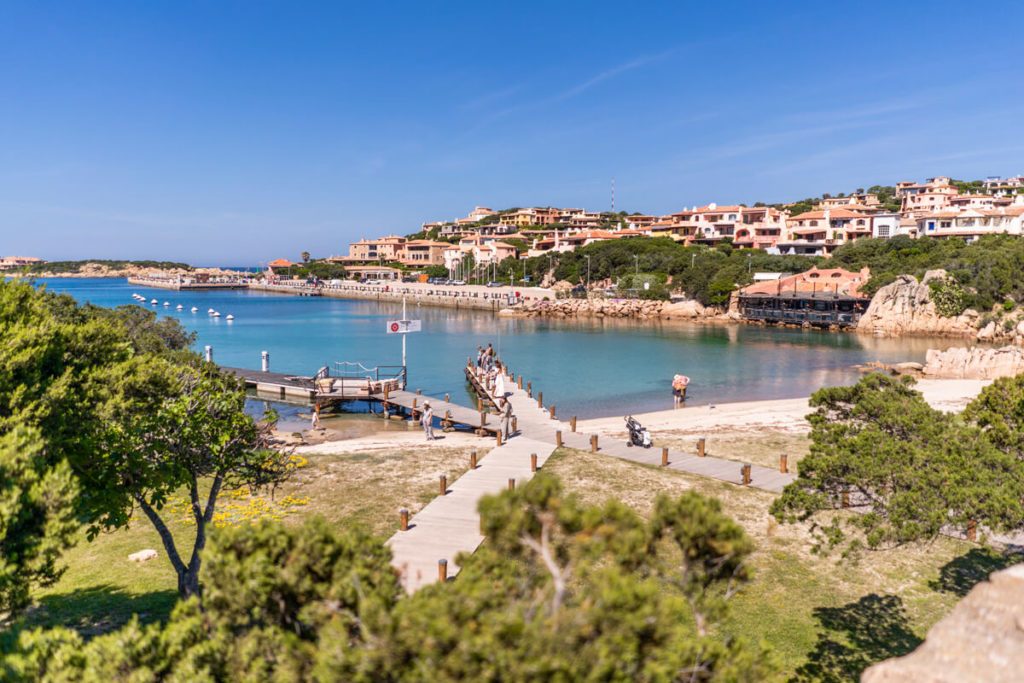
Climate in Sardinia
Sardinia scores with a typically Mediterranean climate: hot, dry summers and mild, rainy winters. With around 300 days of sunshine a year, the Italian island is one of the sunniest regions in Europe—perfect for those who enjoy soaking up the sun and love warmth.
In midsummer (July and August), temperatures often rise above 35 degrees Celsius (especially in the island’s interior), while the annual average temperature is a pleasant 17 degrees Celsius. Rainfall occurs mainly between November and February, while in summer it is almost non-existent.
In the winter months, it can get chilly, especially in the interior and in the mountains, although temperatures rarely fall below seven degrees. The rain in winter transforms the island into a beautifully green landscape with colorful blossoms – perfect for all our hiking and nature lovers who want to enjoy the Italian island in a relaxed manner.
Climate table for Sardinia
The climate table shows you at a glance when it is warmest, sunniest, and least rainy in Sardinia – ideal for planning your trip perfectly! We also recommend our article on travel preparation:
☞ Sardinia Travel Preparation – Our Best Tips for Your Planning
When is the best time to travel to Sardinia?
In our opinion, the best time to enjoy the sun and sea on the Italian island is between May and September. From May onwards, the thermometer slowly but surely climbs above the 20-degree mark on a regular basis. Water temperatures reach around 18 to 20 degrees Celsius at this time. This might still be a bit chilly for sensitive water lovers.
However, the sun shines reliably at this time, and the probability of rain is low – ideal conditions for relaxing on the beach or taking the first short swims of the year.
From mid-June onwards, the weather is already perfect for swimming, but without the big crowds. The beaches are still pleasantly quiet, the sea slowly warms up, and temperatures are already between a pleasant 25 and 28 degrees Celsius.
The months of July and August are quite hot, with average temperatures often exceeding 30 degrees Celsius and water temperatures reaching 24 or even 25 degrees Celsius. These months are ideal for long days at the beach, extensive swimming, snorkeling, or all kinds of water sports.
But beware: Italians also like to spend their holidays in Sardinia, especially in July and August – accommodations and rental cars are more expensive then. Beaches like La Pelosa, Cala Brandinchi, or Costa Rei are also often quite crowded. You should also book accommodations in advance for these months.

Our tip
We prefer the months of April to June and mid/late September. The summer heat eases a little, temperatures settle at a pleasant 25 to 28°C, and the water remains wonderfully warm at around 23°C. The months of May, June, mid-September, and October also attract visitors with very few rainy days per month.
You can often find really good deals on accommodations now, as the low season is slowly starting and prices are dropping noticeably. If you’re more interested in hiking or cycling and are less concerned with the beach, spring and autumn are particularly recommended.
Sardinia in Spring (March to May)
If you want to experience Sardinia actively, spring is ideal. The island awakens from its winter slumber, everything turns green, and wildflowers bloom everywhere – truly beautiful! Temperatures are usually between 15 and 25 degrees, making it perfect for hiking, cycling, or relaxing walks on the beach.
Our tip: May is particularly attractive because the sea slowly warms up, allowing you to enjoy your first days of swimming without being caught in the hustle and bustle. Another plus: It’s much quieter than in summer, and the prices are more reasonable too.
- Temperatures: 15–22 °C
- Activities: Hiking, cycling, road trips, enjoying nature
- Advantages: Blooming landscape, pleasantly mild, little tourism, reasonable prices
- Disadvantages: Sea still cool, some accommodations and restaurants still closed
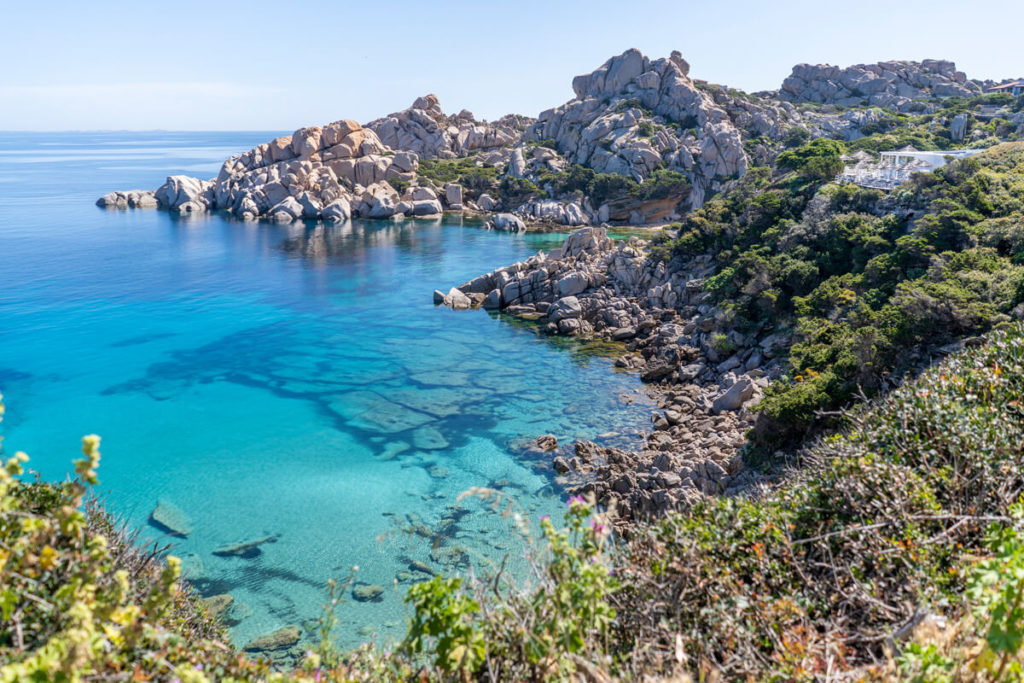
Sardinia in early summer (mid-May – end of June)
If you’re looking for sun, beach, and the dolce vita without the hustle and bustle of midsummer, early summer is the perfect time for Sardinia. From mid-May, it gets really warm, the sea is finally swimmable, and you’ll have many beaches practically to yourself.
It’s also ideal for a short road trip: Everything is open, nature is in bloom, and the coastal roads are especially fun now. A dip in the sea in the morning, a stroll through charming villages in the afternoon – what more could you want?
- Temperatures: 22-28 °C
- Activities: Swimming, boat tours, beach, outdoor activities
- Advantages: Warm weather, not yet crowded, everything open
- Disadvantages: Slightly higher prices than in spring, more going on in popular places
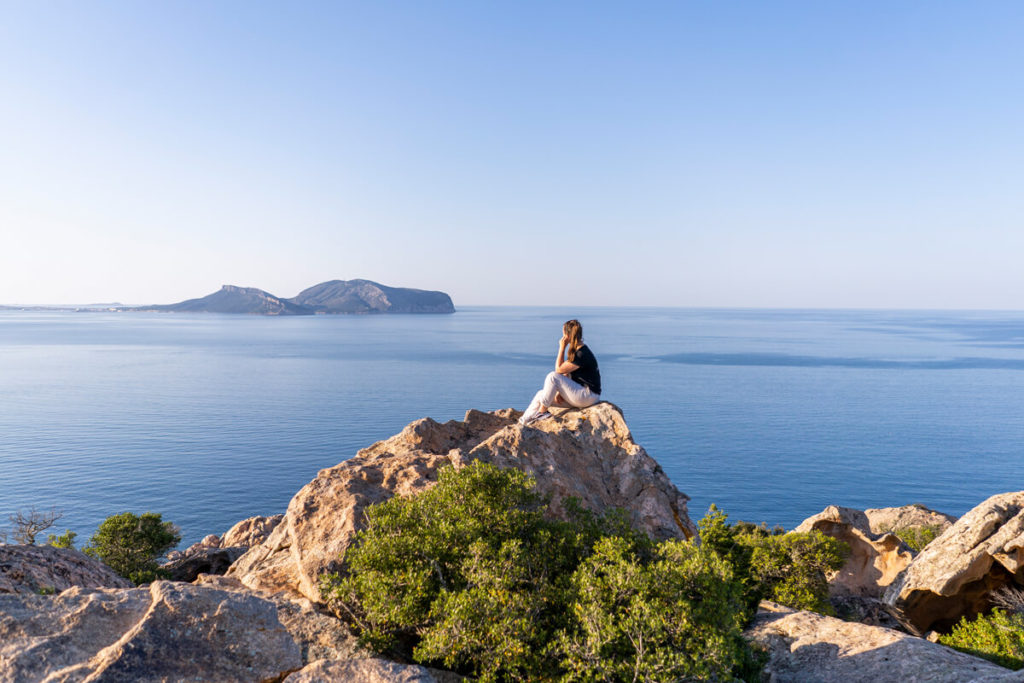
Sardinia in midsummer (July to August)
Summer means high season in Sardinia. Sure, the island beckons with warm temperatures averaging 28 to 35 degrees and turquoise water. Perfect for sun worshippers, beach lovers, and water sports enthusiasts. However, you should also expect crowded beaches, higher prices, and significantly less peace and quiet.
If you like the combination of heat and action, then summer is your best choice. But: The summer months of July and August also get really crowded and sometimes expensive. We would recommend avoiding this time if you’re flexible. But often, there’s no other option—especially if you’re tied to the school holidays. Then it’s worth booking early and exploring the more remote corners of the island if possible.
Our tip: The beginning of June offers a nice compromise between warm weather, fewer crowds, and often cheaper accommodation than July and August. With only 2 rainy days per month, June is also a very dry month with plenty of sunshine.
- Temperatures: 28–35 °C (sometimes hotter)
- Activities: Beach, water sports, nightlife, festivals
- Advantages: Perfect bathing weather, full selection of events and activities
- Disadvantages: Very crowded, high prices, extreme heat – not ideal for tours
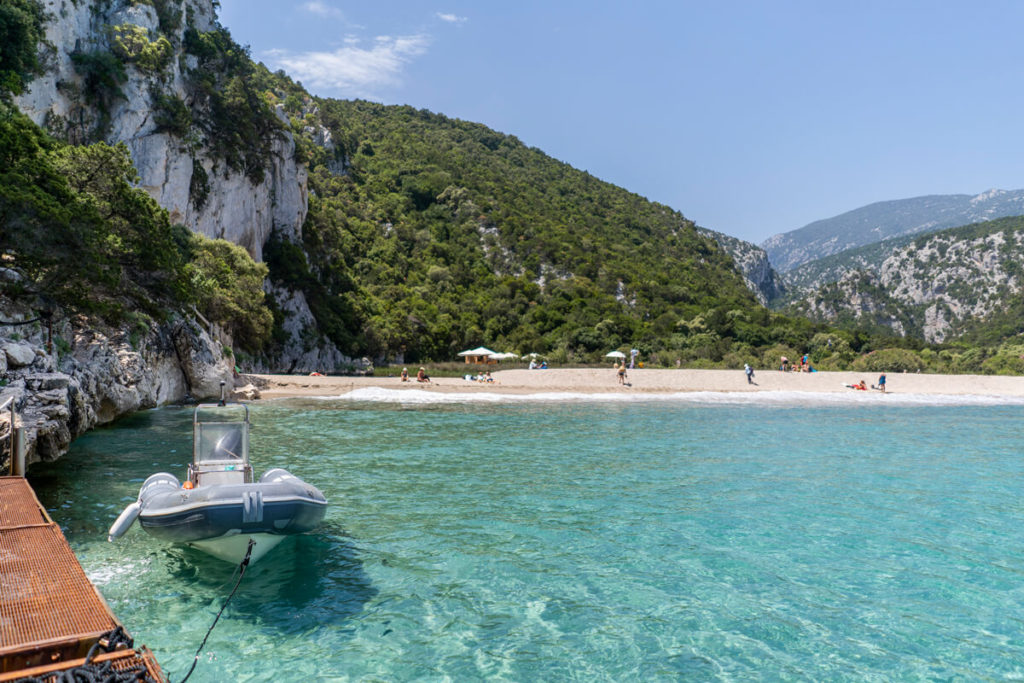
Sardinia in late summer (September)
For many, September is the most beautiful time of year in Sardinia – and we can only agree. The sea is still pleasantly warm from midsummer, the temperatures are still summery, but no longer so oppressively hot.
At the same time, the island is slowly emptying again: fewer tourists, more relaxed travel, better prices. Ideal if you love sun and sea but don’t fancy crowded beaches and overpriced accommodations. For us, September is definitely the best time to travel to Sardinia.
- Temperatures: 25–30 °C
- Activities: Swimming, relaxing, relaxed vacation
- Advantages: Warm sea, fewer tourists, pleasantly quiet
- Disadvantages: Shorter days, some seasonal businesses close at the end of the month
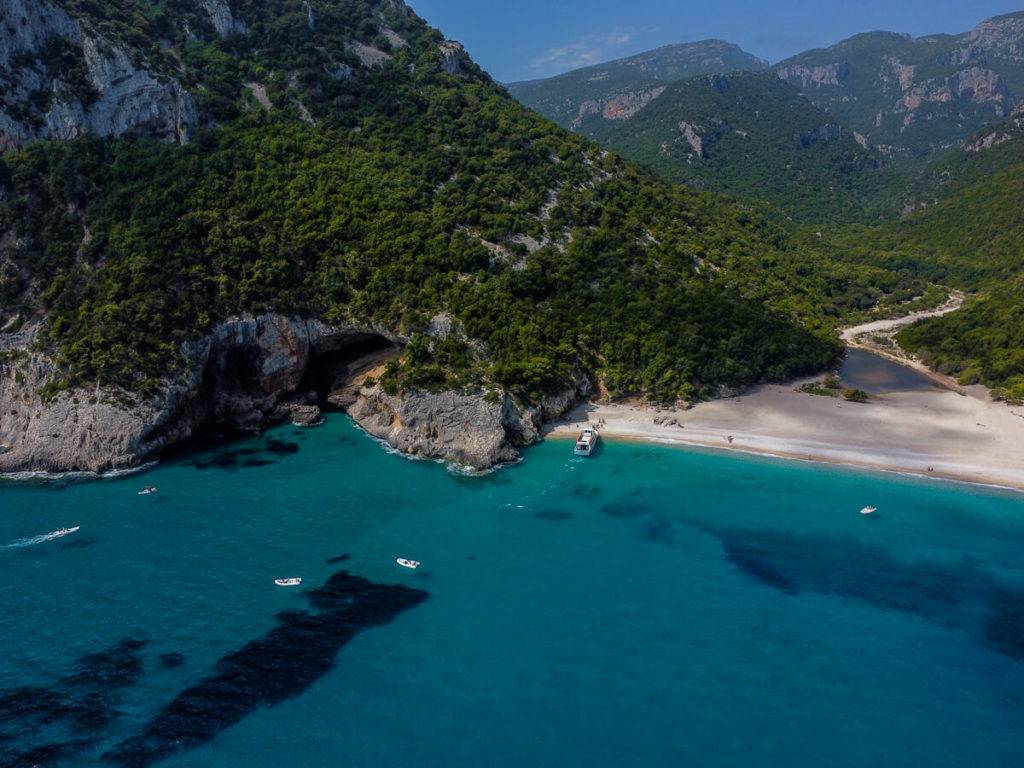
Sardinia in autumn (October and November)
In autumn, Sardinia from a completely different perspective – quiet, relaxed, and pleasantly mild. October is often still wonderfully warm with temperatures around 22 to 26 degrees Celsius, the sea is still inviting for swimming, and the beaches are almost empty.
In November, it becomes noticeably quieter and cooler. Perfect if you want to travel off-season – for example, for short road trips, cultural excursions, or culinary discoveries. It’s usually too chilly for a classic beach holiday, but for anyone who wants to experience Sardinia without the hustle and bustle, autumn is a great time.
- Temperatures: 18–26 °C (October), 12–20 °C (November)
- Activities: Culture, cuisine, hiking, enjoying nature
- Advantages: Quiet atmosphere, mild weather, good prices
- Disadvantages: Sea gets cooler, probability of rain increases, less infrastructure

Sardinia in Winter (December to March)
Winter in Sardinia? Why not! Sure, swimming is out of the question, but the island offers peace and quiet, affordable prices, and the opportunity to truly immerse yourself in Sardinian culture. Temperatures range between a mild 8 and 15 degrees Celsius. Occasionally, snow falls at altitudes below 1,000 meters.
The coldest month of the year is January, with temperatures ranging from 6 to a maximum of 14 °C. Away from Sardinia’s coast, you can still enjoy great hikes and have many sights almost to yourself. But: Winter also brings with it the most rainy days per month.
- Temperatures: 8–15 °C
- Activities: Sightseeing, nature, culinary tours, quiet time out
- Advantages: Cheap, hardly any tourists, experience authentic local life
- Disadvantages: Many hotels and restaurants closed, no bathing weather, rain
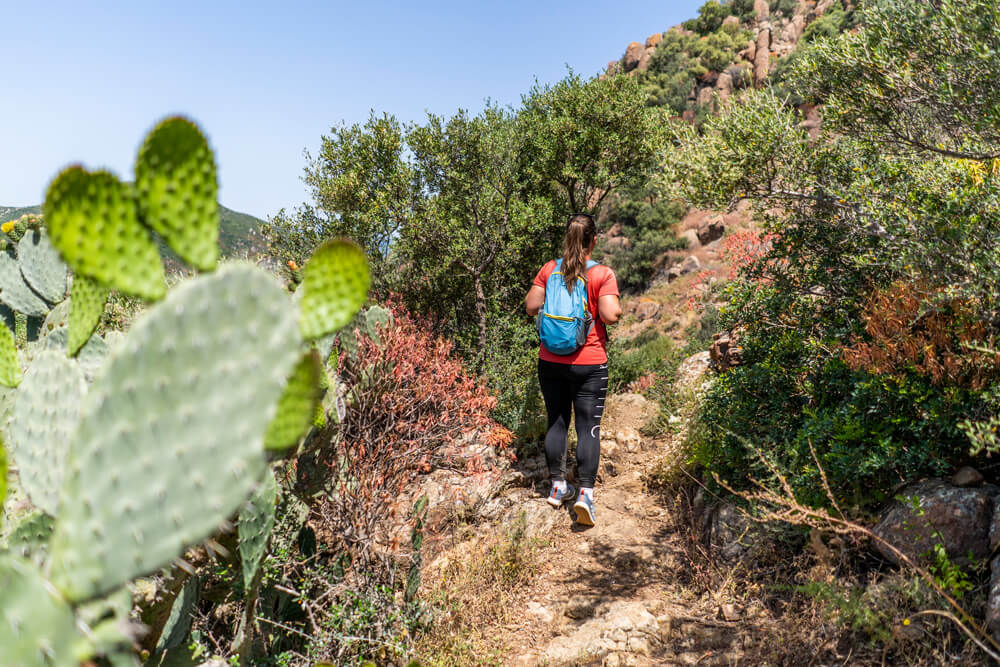
Best Time to Travel for Activities
Whether you’re looking for an active holiday, a day at the beach, or a quiet exploration – Sardinia has something to offer all year round. Depending on what you’re in the mood for, it’s worth taking a look at the best time to travel for certain activities. The following overview shows you at a glance when which activity is particularly worthwhile – and what alternatives there are if you’re traveling outside of peak times.
Travel Tips for Sardinia
Getting to Sardinia
You can reach Sardinia either by plane or ferry. There are three international airports: Cagliari in the south, Olbia in the northeast, and Alghero in the northwest. From there, it’s easy to continue your journey – either by rental car or public transport. Book your flight ticket here*.
If you prefer to travel by car (or simply fancy a mini-cruise), you can take the ferry from Genoa, Livorno, Civitavecchia, or Naples. You’ll arrive on the island in Porto Torres, Olbia, or Cagliari – depending on which route you choose. More information here: Traveling to Sardinia by ferry.
Book a rental car
If you really want to see the island, you’ll need a car. The roads are fine, although they can get winding and narrow in the mountains. Parking is usually not a problem during the off-season – but during the high season (June 1 – September 30), parking is often subject to a fee, especially on beaches. Many people use the easypark app to pay.
Parking markings:
- Blue marking: Parking ticket required
- White marking: Free parking
- Yellow-black marking: No parking
- Yellow stripe: Taxi and bus parking
Speed limits:
- In town: 50 km/h
- Country road: 90 km/h
- Expressway/Motorway: 130 km/h
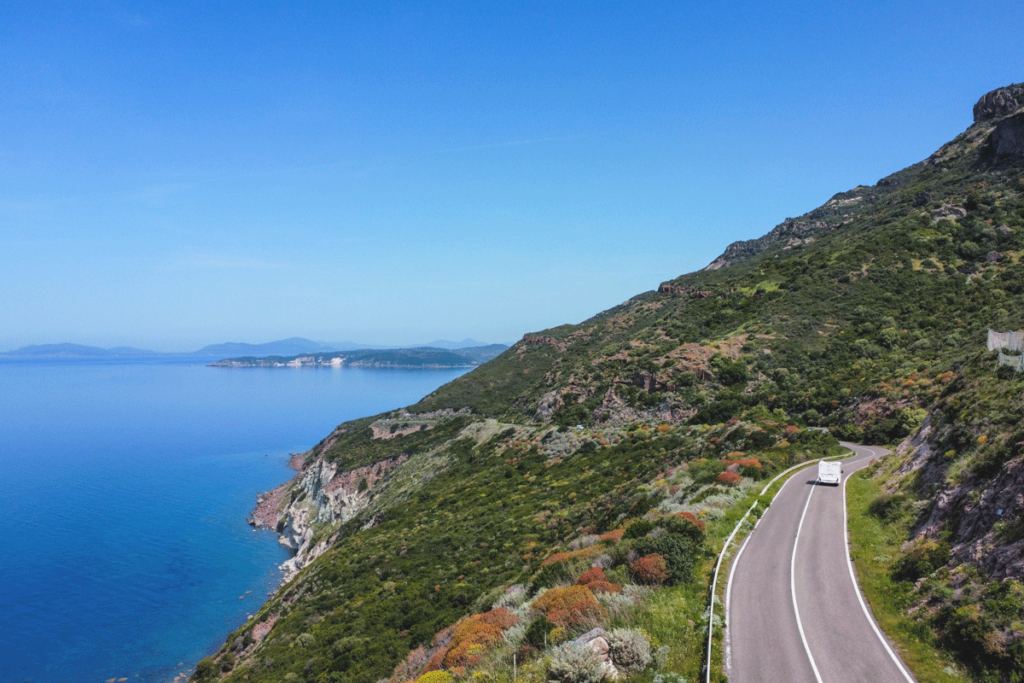
Payment and Credit Cards
In cities and tourist areas, you can pay by card almost everywhere – Visa and Mastercard are almost always accepted, Amex not everywhere. Nevertheless: Always carry some cash with you, especially for markets, smaller shops, or more remote locations. More on the topic of travel credit cards.
We use the following while traveling:
Sardinia packing list
The basics are clear: sunscreen, sunglasses, swimwear. Also sturdy shoes for hiking, a small daypack, and a dry bag for boat or kayak trips – very practical! In May, we brought almost only light clothing – occasionally wearing a sweater in the evenings.
What we packed for our Sardinia tour:
Sardinia Travel Guide
For your trip, we recommend the travel guide from DuMont Verlag* or the travel guide from Marco Polo* – great for on the go and with concise information. For more in-depth information, the travel guide from Michael Müller Verlag* is our first choice. We use Google Maps to mark places we don’t want to miss.
Frequently Asked Questions about Sardinia
The swimming season in Sardinia usually begins in May, when the Mediterranean slowly warms up – especially in shallower bays, it’s already quite pleasant to swim. Swimming is usually really pleasant from mid/late May until September.
We love May and September. For many (including us), both months are the perfect mix of good weather, pleasant temperatures, less hustle and bustle, and fair prices.
For a complete tour, at least 14 days. If you only have a week, you should focus on the north or south.
Yes—and you should! Perfect for a road trip.
Depends on what you’re looking for. We love the north for the all-round package—but the south also has beautiful beaches and bays.
It’s possible. Our 15-day round trip cost us approximately €2,800 for two people – or about €93 per day per person, including everything.
Conclusion: The perfect time to visit Sardinia
Sardinia has its charm in every season – but if you’re flexible, we would definitely recommend April and May, as well as the end of September. In spring, the island blooms; it’s pleasantly warm and wonderfully quiet. At the end of September, the sea is still nice and warm, the beaches are emptier, and traveling is super relaxing. And hey! You save a lot of parking fees before May and from October onwards.
Summer can be beautiful, but also exhausting – hot, crowded, and expensive. Things get more pleasant again in autumn, and even winter has its charm if you’re more interested in nature and culture than a beach holiday. Ultimately, it depends on what you’re looking for—but for us, spring and late summer are simply the perfect mix of good weather, tranquility, and that true Sardinian feeling.